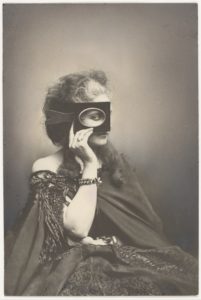A recent decision from the Southern District of New York (SDNY) should give pause to artists promoting their works by posting them on their public social media accounts.
Mashable had offered professional photographer Stephanie Sinclair 50 dollars for licensing rights for one of her photographs, to illustrate an article on female photojournalists featuring her and several others.
Ms. Sinclair did not accept the offer, and Mashable then embedded the photo that Plaintiff had previously published on her public Instagram account to illustrate the article. Ms. Sinclair asked Mashable to take down the picture. It refused and Ms. Sinclair then filed a copyright infringement suit.

Mashable moved to dismiss, claiming that, by posting the photograph on her public Instagram account, Plaintiff had granted Instagram the right to license the photograph, and that, it turn, Instagram had granted Mashable a valid sublicense.
United States District Judge Kimba M. Wood from the Southern District of New York (SDNY) granted the motion to dismiss, finding that Mashable had used the photograph pursuant to a valid sublicense from Instagram, which Terms of Use state that users grant Instagram “a non-exclusive, fully paid and royalty-free, transferable, sub-licensable, worldwide license to the [c]ontent [posted] on or through [Instagram],” if the content is posted on a public, not a private account.
An image published on a website can be “embedded” in another page if a specific “embed” code has been added to the HTML instructions incorporating the image, which directs the browser to the third-party server to retrieve the image. The embedded image then is hyperlinked to the third-party website.
In our case, Plaintiff’s photograph appeared embedded on the Mashable website page, but was not hosted on Mashable’s website server. It was hosted on Instagram’s server, after Plaintiff had posted it on her public account.
In a similar case, Goldman v. Breitbart, the SDNY had rejected in 2018 the “server’s test“ laid out by the Ninth Circuit in Perfect 10, Inc. v. Amazon. com, Inc., which was a hyperlinking case, not an image embedded case. Under this test, images appearing on a site using frames and in-line links are not a display of the full-size images stored on and served by another website.
While noting that in-line linking works, like embedding, is based on HTML code instructions, United States District Judge Katherine B. Forrest had not applied the server test in Goldman, finding it inappropriate to the specific facts of this case and also “[not] adequately grounded in the text of the Copyright Act.” She found that using an embedded tweet reproducing a photograph protected by copyright to illustrate an article was infringing.
In Goldman, the author had not originally published the photograph on Twitter. Instead, he had uploaded it in his Snapchat Story. It became viral and was published on Twitter by a third party. Judge Wood explained in a footnote that, as Instagram had granted Mashable a valid license to display the work, the court did not need to address the issue of whether embedding an image is an infringing display of the work.
Take away: by posting a work protected by copyright on a public Instagram account an author automatically transfers rights to the social media site, including the right to sub-license a worldwide license to use it. The author not wishing to transfer these rights is only left with the option of making his or her account private.



